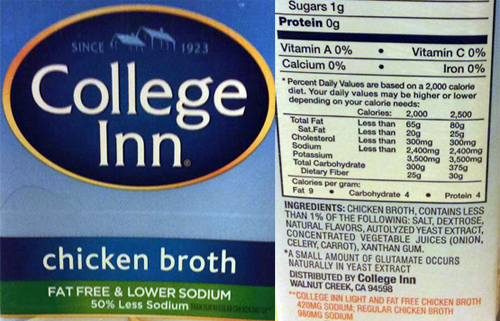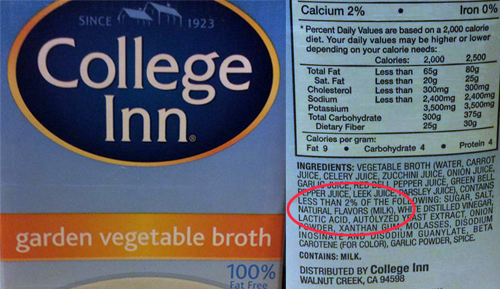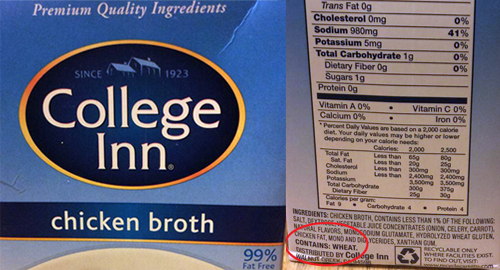The holidays are a time of traditions and sharing food. Good food allergy management is especially important when sharing food. It includes reading every label, every time. Ingredients or manufacturing processes can change at any time. Manufacturers are not required to alert shoppers that ingredients or manufacturing processes have changed. The only way to know is to read the entire ingredient statement every time you shop. This is particularly important around the holidays when you may use products you do not buy regularly.
Ingredient Labeling
Verify with family and friends if you are relying on them to use brands you trust. Have them save the packaging so you can check ingredient labels before your child eats. Remind others that different variations of a product, even the same brand, can have different ingredients. See the pictures below.

The Food Allergen Labeling and Consumer Protection Act (FALCPA) requires labeling for the 8 major allergens - milk, soy, egg, peanut, tree nut, wheat, fish and crustacean shellfish. The law requires that all foods regulated by the Food and Drug Administration (FDA) list ingredients that contain one or more of the major food allergens. This can be done in one of two ways:
1) The common or usual name of the major food allergen must be include the food source, sometimes in parentheses, in the list of ingredients. This will occur the first time the major food allergen is listed and does not have to be repeated each time the name of the specific food allergen appears.
Examples: "hydrolyzed wheat gluten," "natural flavors (milk)" and "soy lecithin"

This variety of Garden Vegetable Broth contains milk.
2) There may be a section after or near the ingredient list called “Contains”. If included on a food label, the “Contains" statement must identify the food sources for all major food allergens that are ingredients in that product.
Example: "Contains Wheat, Milk and Soy."

This variety of Chicken Broth contains wheat.
Advisory Statements
The FDA does not require advisory statements. Any advisory statements you find on packaging are voluntary and not regulated.
Statements like “may contain...” or “processed in a facility with...” may not be consistent or accurately represent the allergen risk of that product. They are not always a good measure of whether a food contains an allergen. Follow your child’s health plan and discuss any questions with your child's doctor.
Happy Holidays from all of us at Kids With Food Allergies. We are truly grateful for you being part of our community!





Comments (0)